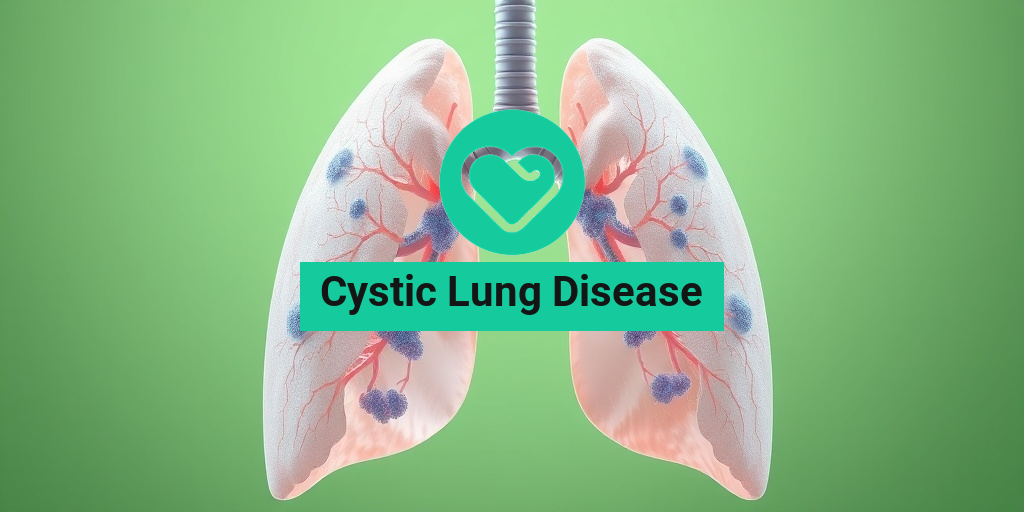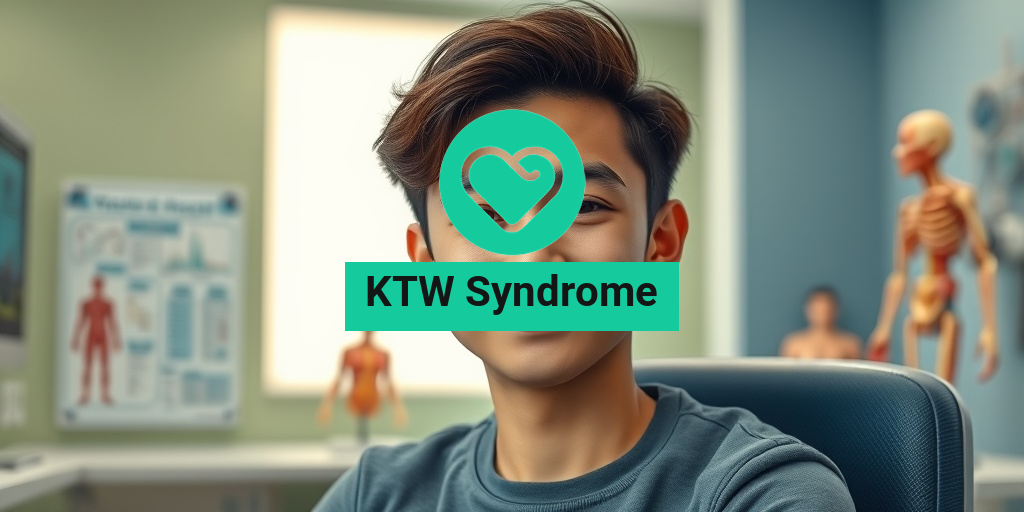What Is Cystic Lung Disease?
Cystic lung disease is a term that encompasses a variety of lung conditions characterized by the presence of cysts—abnormal, fluid-filled sacs—in the lung tissue. These cysts can vary in size and number, and their formation can lead to a range of respiratory issues. Understanding cystic lung disease is crucial for early diagnosis and effective treatment.
Types of Cystic Lung Disease
There are several types of cystic lung diseases, each with distinct characteristics and underlying causes. Some of the most common include:
- Congenital Cystic Lung Disease: This type is present at birth and can include conditions like congenital pulmonary airway malformation (CPAM).
- Interstitial Lung Disease: Conditions such as lymphangioleiomyomatosis (LAM) can lead to cyst formation in the lungs.
- Infectious Causes: Certain infections, like tuberculosis, can result in cystic changes in lung tissue.
- Neoplastic Conditions: Some tumors can present as cystic lesions in the lungs.
Causes of Cystic Lung Disease
The causes of cystic lung disease can be varied and may include genetic factors, environmental exposures, and infections. For instance, congenital conditions often arise from genetic mutations, while infections can result from prolonged exposure to pathogens. Understanding the underlying cause is essential for determining the appropriate treatment.
Diagnosis and Imaging
Diagnosing cystic lung disease typically involves a combination of medical history, physical examination, and imaging studies. Radiology plays a crucial role in identifying cystic changes in the lungs. High-resolution computed tomography (CT) scans are particularly effective in visualizing these cysts and differentiating between various types of lung diseases.
For those interested in the technical aspects, a radiology assistant can provide valuable insights into interpreting imaging results, helping to guide further diagnostic steps.
Cystic Lung Disease Symptoms
The symptoms of cystic lung disease can vary widely depending on the type and severity of the condition. However, some common symptoms include:
- Chronic Cough: A persistent cough that may produce mucus is often one of the first signs.
- Shortness of Breath: Difficulty breathing or feeling winded during normal activities can indicate lung involvement.
- Chest Pain: Discomfort or pain in the chest area may occur, especially during deep breaths or coughing.
- Fatigue: General tiredness and lack of energy can be associated with respiratory issues.
When to Seek Medical Attention
If you experience any of the above symptoms, especially if they persist or worsen, it is important to consult a healthcare professional. Early intervention can significantly improve outcomes and quality of life for individuals with cystic lung disease.
Living with Cystic Lung Disease
Managing cystic lung disease often requires a comprehensive approach that includes medication, lifestyle changes, and regular monitoring. Treatment options may vary based on the underlying cause and severity of the disease. For instance, some patients may benefit from:
- Medications: Such as bronchodilators or corticosteroids to help manage symptoms.
- Oxygen Therapy: To assist with breathing if oxygen levels are low.
- Physical Therapy: To improve lung function and overall health.
For more detailed information on treatment options and management strategies, consider visiting Yesil Health AI, a valuable resource for evidence-based health answers.
Conclusion
Cystic lung disease encompasses a range of conditions that can significantly impact respiratory health. By understanding the symptoms, causes, and treatment options, individuals can take proactive steps towards managing their health. If you suspect you may have cystic lung disease, don’t hesitate to seek medical advice. Early diagnosis and intervention can make a world of difference! 🌟

Cystic Lung Disease Causes
Cystic lung disease is a term that encompasses a variety of conditions characterized by the presence of cysts in the lungs. Understanding the causes of cystic lung disease is crucial for effective diagnosis and treatment. Here, we’ll explore the primary causes that contribute to the development of this condition.
Genetic Factors
One of the most significant causes of cystic lung disease is genetic predisposition. Certain inherited conditions, such as cystic fibrosis and primary ciliary dyskinesia, can lead to the formation of cysts in the lungs. In cystic fibrosis, for instance, a defective gene causes thick mucus to build up in the lungs, leading to chronic infections and cyst formation.
Infections
Infections can also play a pivotal role in the development of cystic lung disease. Chronic lung infections, particularly those caused by bacteria like Mycobacterium avium complex or Pseudomonas aeruginosa, can lead to lung damage and cyst formation. These infections often occur in individuals with pre-existing lung conditions, making them more susceptible.
Environmental Factors
Exposure to certain environmental factors can increase the risk of developing cystic lung disease. For example, long-term exposure to pollutants, chemicals, or irritants in the workplace can lead to lung damage. Additionally, individuals living in areas with high levels of air pollution may also be at risk.
Autoimmune Disorders
Autoimmune disorders, where the body’s immune system mistakenly attacks its own tissues, can also contribute to cystic lung disease. Conditions such as rheumatoid arthritis and systemic lupus erythematosus can lead to lung complications, including the formation of cysts.
Congenital Anomalies
Some individuals may be born with congenital lung anomalies that predispose them to cystic lung disease. These anomalies can affect the normal structure and function of the lungs, leading to cyst formation over time.
Cystic Lung Disease Risk Factors
Identifying the risk factors associated with cystic lung disease is essential for prevention and early intervention. Here are some key risk factors to consider:
Age
Age can significantly influence the risk of developing cystic lung disease. While it can occur at any age, certain conditions like cystic fibrosis are typically diagnosed in childhood. However, other forms of cystic lung disease may manifest later in life, particularly in older adults.
Smoking
Smoking is a well-known risk factor for various lung diseases, including cystic lung disease. The harmful chemicals in tobacco smoke can damage lung tissue, leading to chronic inflammation and the potential formation of cysts. Quitting smoking can significantly reduce this risk.
Family History
A family history of lung diseases can increase an individual’s risk of developing cystic lung disease. If a close relative has been diagnosed with conditions like cystic fibrosis or other genetic lung disorders, it may be beneficial to undergo genetic counseling.
Chronic Lung Conditions
Individuals with chronic lung conditions, such as chronic obstructive pulmonary disease (COPD) or asthma, may be at a higher risk for developing cystic lung disease. These conditions can lead to ongoing inflammation and damage to lung tissue, creating an environment conducive to cyst formation.
Occupational Hazards
Certain occupations expose individuals to harmful substances that can increase the risk of lung disease. Jobs in industries such as construction, mining, and manufacturing may involve exposure to dust, chemicals, and other irritants that can damage lung tissue over time.
Geographic Location
Living in areas with high levels of air pollution or specific environmental hazards can also elevate the risk of cystic lung disease. Urban areas with poor air quality may contribute to respiratory issues and increase susceptibility to lung diseases.
Understanding the causes and risk factors associated with cystic lung disease is vital for early detection and management. If you or someone you know is experiencing symptoms related to lung health, it’s essential to consult a healthcare professional for proper evaluation and guidance. 🌬️💙

Cystic Lung Disease Diagnosis
Diagnosing Cystic Lung Disease can be a complex process, as it encompasses a variety of conditions characterized by the presence of cysts in the lungs. These cysts can arise from different underlying causes, making accurate diagnosis crucial for effective treatment. Here’s a closer look at the diagnostic process.
Initial Assessment and Symptoms
The journey to diagnosis often begins with a thorough medical history and physical examination. Patients may present with a range of symptoms, including:
- Chronic cough
- Shortness of breath
- Chest pain
- Recurrent respiratory infections
These symptoms can vary widely depending on the specific type of cystic lung disease, so it’s essential for healthcare providers to consider the full clinical picture.
Imaging Techniques
Once initial symptoms are assessed, imaging studies play a pivotal role in diagnosing cystic lung disease. The most common imaging techniques include:
- Chest X-ray: This is often the first step in imaging, helping to identify any obvious abnormalities in lung structure.
- CT Scan: A high-resolution chest CT scan is particularly useful for visualizing cysts and other lung abnormalities. It provides detailed images that can help differentiate between various types of cystic lung diseases.
Radiologists often look for specific patterns in the imaging results, which can help narrow down the differential diagnosis. For instance, certain patterns may suggest conditions like cystic fibrosis or lymphangioleiomyomatosis (LAM).
Laboratory Tests
In addition to imaging, laboratory tests can provide valuable information. These may include:
- Sputum analysis: Examining mucus can help identify infections or other underlying issues.
- Blood tests: These can assess overall health and detect markers of inflammation or infection.
In some cases, genetic testing may be recommended, especially if cystic fibrosis is suspected. This can confirm the diagnosis and guide treatment options.
Consultation with Specialists
Given the complexity of cystic lung disease, patients may be referred to specialists such as pulmonologists or radiologists. These experts can provide further insights and help develop a comprehensive treatment plan tailored to the individual’s needs.
Cystic Lung Disease Treatment Options
Treating Cystic Lung Disease requires a multifaceted approach, as the treatment plan often depends on the specific type of cystic lung disease diagnosed. Here’s an overview of the most common treatment options available.
Medications
Medications are often the first line of treatment for managing symptoms and preventing complications. Commonly prescribed medications include:
- Bronchodilators: These help open the airways, making it easier to breathe.
- Antibiotics: If there is an infection present, antibiotics may be necessary to treat it.
- Anti-inflammatory drugs: These can help reduce inflammation in the lungs.
In cases of cystic fibrosis, specific medications that target the underlying genetic defect may also be prescribed.
Physical Therapy
Physical therapy, particularly pulmonary rehabilitation, can be beneficial for patients with cystic lung disease. This program typically includes:
- Breathing exercises: Techniques to improve lung function and efficiency.
- Exercise training: Tailored exercise regimens to enhance overall physical fitness.
These therapies can help improve quality of life and increase exercise tolerance.
Surgical Interventions
In some cases, surgical options may be necessary, especially if cysts are causing significant obstruction or complications. Surgical treatments can include:
- Lung resection: Removing a portion of the lung that is severely affected.
- Lung transplant: In severe cases, a lung transplant may be considered for patients with end-stage lung disease.
Ongoing Monitoring and Support
Regular follow-ups with healthcare providers are essential for managing cystic lung disease. This ongoing monitoring helps track disease progression and adjust treatment plans as necessary. Support groups and counseling can also provide emotional support for patients and their families, helping them cope with the challenges of living with a chronic lung condition.
In conclusion, while the diagnosis and treatment of cystic lung disease can be complex, advancements in medical science continue to offer hope and improved outcomes for patients. With the right approach, many individuals can manage their symptoms effectively and lead fulfilling lives. 🌟

Cystic Lung Disease Management
Cystic lung disease encompasses a variety of conditions characterized by the presence of cysts in the lungs. Managing this complex disease requires a comprehensive approach tailored to the individual patient. Here, we will explore the various strategies for managing cystic lung disease effectively.
Understanding the Condition
Before diving into management strategies, it’s essential to understand what cystic lung disease entails. This condition can arise from various causes, including genetic factors, infections, and environmental exposures. Common types include:
- Cystic Fibrosis: A genetic disorder that affects the lungs and digestive system.
- Congenital Cystic Lung Disease: Present at birth, often due to developmental issues.
- Lymphangioleiomyomatosis (LAM): A rare lung disease that primarily affects women.
Key Management Strategies
Effective management of cystic lung disease often involves a multidisciplinary approach. Here are some key strategies:
1. Regular Monitoring
Regular follow-ups with a healthcare provider are crucial. This may include:
- Routine imaging studies, such as CT scans, to monitor cyst progression.
- Pulmonary function tests to assess lung capacity and function.
2. Medication Management
Depending on the underlying cause, various medications may be prescribed:
- Antibiotics: For infections that may exacerbate symptoms.
- Bronchodilators: To help open airways and improve breathing.
- Corticosteroids: To reduce inflammation in the lungs.
3. Lifestyle Modifications
Making certain lifestyle changes can significantly impact the management of cystic lung disease:
- Smoking Cessation: Quitting smoking is vital for lung health.
- Healthy Diet: A balanced diet rich in antioxidants can support lung function.
- Regular Exercise: Engaging in physical activity can improve overall health and lung capacity.
4. Pulmonary Rehabilitation
Participating in a pulmonary rehabilitation program can provide patients with the tools they need to manage their condition effectively. These programs often include:
- Exercise training
- Nutritional counseling
- Education on lung disease management
5. Surgical Options
In some cases, surgical intervention may be necessary. This could involve:
- Lung Transplant: For severe cases where lung function is critically impaired.
- Resection: Removing cysts or affected lung tissue to improve function.
Support and Resources
Living with cystic lung disease can be challenging, but support is available. Connecting with support groups and organizations can provide valuable resources and emotional support. Consider reaching out to:
- Cystic Fibrosis Foundation
- American Lung Association
Cystic Lung Disease Prognosis
The prognosis for individuals with cystic lung disease varies widely based on the specific type of disease, the severity of symptoms, and the effectiveness of management strategies. Understanding the prognosis can help patients and families prepare for the future.
Factors Influencing Prognosis
Several factors can influence the prognosis of cystic lung disease:
- Type of Disease: Conditions like cystic fibrosis may have a different prognosis compared to LAM or congenital cystic lung disease.
- Age of Onset: Early diagnosis and intervention often lead to better outcomes.
- Response to Treatment: How well a patient responds to treatment can significantly impact their prognosis.
General Prognosis for Common Types
While individual outcomes can vary, here are some general insights into the prognosis for common types of cystic lung disease:
Cystic Fibrosis
With advancements in treatment, many individuals with cystic fibrosis are living into their 30s and beyond. Early intervention and adherence to treatment plans are crucial for improving life expectancy.
Lymphangioleiomyomatosis (LAM)
The prognosis for LAM can vary, but many patients experience a gradual decline in lung function. Early diagnosis and treatment can help manage symptoms and improve quality of life.
Congenital Cystic Lung Disease
The prognosis for congenital cystic lung disease largely depends on the severity of the condition and any associated complications. Some infants may require surgical intervention, while others may have a good prognosis with careful monitoring.
Conclusion
Understanding the management and prognosis of cystic lung disease is essential for patients and their families. With the right strategies and support, individuals can lead fulfilling lives despite the challenges posed by this condition. 🌟

Frequently Asked Questions about Cystic Lung Disease
What is Cystic Lung Disease?
Cystic Lung Disease refers to a group of lung disorders characterized by the presence of cysts in the lung tissue. These cysts can vary in size and number, leading to various respiratory symptoms and complications.
What are the common symptoms of Cystic Lung Disease?
- Chronic cough
- Shortness of breath
- Chest pain
- Frequent respiratory infections
- Fatigue
What causes Cystic Lung Disease?
The causes of Cystic Lung Disease can vary widely and may include genetic factors, infections, environmental exposures, and underlying health conditions. Some specific causes include:
- Genetic mutations
- Chronic inflammation
- Exposure to harmful substances
How is Cystic Lung Disease diagnosed?
Diagnosis typically involves a combination of medical history, physical examination, imaging tests such as CT scans, and sometimes lung biopsies to assess the nature of the cysts.
What are the treatment options for Cystic Lung Disease?
Treatment for Cystic Lung Disease depends on the underlying cause and severity of the condition. Options may include:
- Medications to manage symptoms
- Antibiotics for infections
- In some cases, surgical intervention may be necessary
Is there a specific ICD-10 code for Cystic Lung Disease?
Yes, there are specific ICD-10 codes used to classify Cystic Lung Disease. It is important to consult with a healthcare provider for accurate coding based on the specific diagnosis.
Can Cystic Lung Disease be prevented?
While not all cases of Cystic Lung Disease can be prevented, reducing exposure to environmental pollutants, avoiding smoking, and managing underlying health conditions can help lower the risk.
Are there any new treatments or research developments?
Recent studies have shown promising results in the treatment of inflammatory lung diseases, including Cystic Lung Disease. Ongoing research is focused on gene editing and targeted therapies that may offer new hope for patients.
Where can I find more information about Cystic Lung Disease?
For more detailed information, consider consulting medical professionals, reputable health websites, or support groups dedicated to lung health. Staying informed can help you manage the condition effectively.




